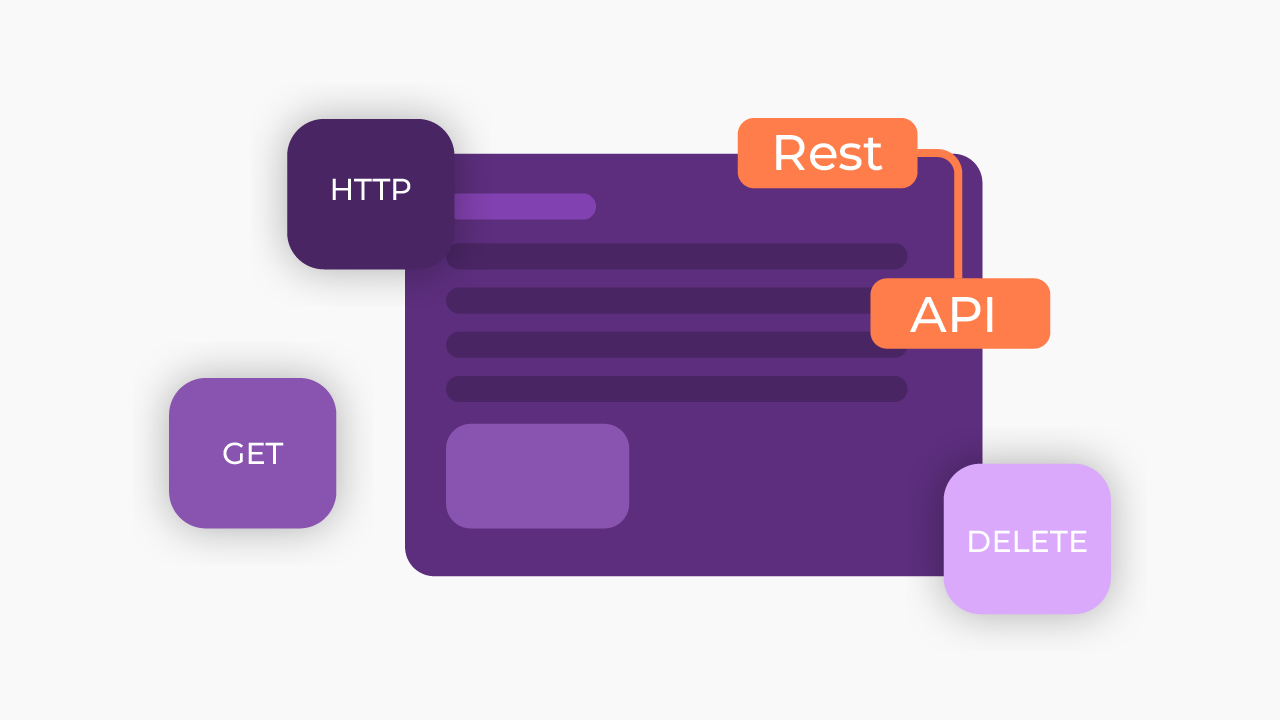
REST and Open APIs: How Does the Communication Model Work?
Open APIs play a fundamental role in systems integration and the digital transformation of companies. For these APIs to operate efficiently and scalably, one of the most widely used models is REST (Representational State Transfer). This communication model allows the exchange of data between systems in a standardized way, facilitating connectivity between applications, platforms, and services.
In this article, we will explore how the REST model works, its principles and benefits, and how it is applied in open APIs.
What is REST?
REST (Representational State Transfer) is an architectural style for building APIs, created by Roy Fielding in the early 2000s. It defines a set of principles for communication between distributed systems, using the HTTP protocol to transfer information efficiently and scalably.
A RESTful API (API based on REST) follows these principles and allows applications to communicate through simple, well-defined calls. This model has become the most widely used standard for developing open APIs, due to its ease of implementation and compatibility with different technologies.
How Does the REST Communication Model Work?
The REST communication model is based on the exchange of HTTP requests and responses, using resources identified by URLs (Uniform Resource Locator). Each resource represents an object or information in the system and can be accessed through specific methods.
The main components of the REST model are:
1. Resources and Endpoints
Resources are the elements that can be manipulated through the API. They are accessed through specific URLs, called endpoints.
Example of endpoint:
arduino
CopyEdit
This endpoint can represent a set of users registered in the system.
2. HTTP Methods
REST uses HTTP methods to define the operations that can be performed on a resource:
GET: Retrieves information from a resource.
POST: Creates a new resource.
PUT: Updates an existing resource.
DELETE: Removes a resource.
Example of a GET request:
nginx
CopyEdit
GET https://api.example.com/users/1
This call returns the information of the user with ID 1.
3. Response Structure (JSON or XML Format)
Responses from RESTful APIs are usually sent in structured formats, such as JSON (JavaScript Object Notation) or XML (Extensible Markup Language).
Example of a response in JSON:
json
CopyEdit
{
“id”: 1,
“name”: “John Smith”,
“email”: “john@email.com”
}
JSON is the most widely used format because it is lightweight, easy to read and compatible with several programming languages.
4. Stateless
One of the fundamental principles of REST is that communication must be stateless, that is, each request sent to the API must contain all the information necessary to be processed. The server does not keep information about previous requests, making the API more scalable and efficient.
5. Use of HTTP Headers
REST APIs use HTTP headers to provide additional information about the request and response. Some examples:
Content-Type: Indicates the data format (JSON, XML).
Authorization: Used for authentication, such as OAuth or API tokens.
Benefits of the REST Model for Open APIs
Adopting the REST model for open APIs brings several advantages, making communication between systems more efficient and accessible.
1. Simplicity and Ease of Use
RESTful APIs are based on simple concepts, such as HTTP requests and data structured in JSON, making them easy to implement and consume by developers.
2. Interoperability and Standardization
Since REST uses open and well-defined standards, APIs based on this model can be consumed by any system or application, regardless of the programming language or platform used.
3. Scalability and Performance
REST’s stateless model allows servers to handle multiple requests simultaneously without overloading the infrastructure. This makes open APIs scalable and suitable for large applications.
4. Flexibility and Adaptation to Different Needs
REST allows the construction of APIs that meet different types of applications, from web and mobile systems to integrations with IoT (Internet of Things).
5. Security and Access Control
RESTful APIs can be protected using token authentication, such as OAuth 2.0, ensuring that only authorized users can access certain resources.
Practical Examples of REST in Open APIs
The REST model is widely used by large companies and internet services. Here are some examples of open APIs based on REST:
- Google Maps API: Allows you to integrate maps, routes and geolocation into applications.
- Twitter API: Provides access to tweets, profiles and trends on the platform.
- Stripe API: Facilitates the integration of online payments in e-commerce.
- OpenWeather API: Provides real-time weather data for various locations
- TM Forum Open APIs: operate within the context of the TM Forum Open Digital Architecture (ODA) by providing a standard and reliable application solution for the components of this architecture.
These APIs allow developers to incorporate advanced functionalities into their systems quickly and efficiently.
The REST model is the basis of most open APIs, ensuring efficient, scalable and secure communication between different systems. It uses HTTP requests, standardized methods, structured data in JSON or XML and follows the stateless principle, making service integration simpler and more effective.
Companies that adopt RESTful APIs are able to offer more flexible, connected and innovative solutions, accelerating digital transformation and enabling new business opportunities. As technology evolves, the REST model continues to be the main choice for developing open APIs, ensuring connectivity and interoperability in the digital world.
